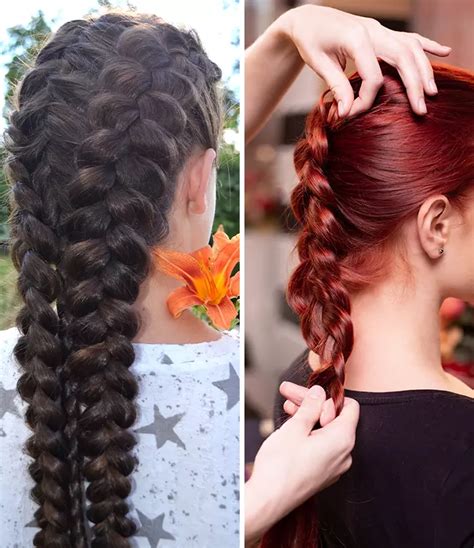Introduction
Braiding is a versatile hair styling technique that has been practiced for centuries. Among the most popular braiding styles are the Dutch braid and the French braid. While they share some similarities, these two braids have distinct characteristics that set them apart. In this article, we will delve into the key differences between Dutch and French braids, providing a comprehensive comparison to help you choose the best style for your hair and occasion.

10 Essential Differences Between Dutch and French Braids
-
Weaving Direction: Dutch braids are woven under instead of over, while French braids are woven over. This difference in weaving direction creates a raised, textured effect for Dutch braids and a smoother, flatter finish for French braids.
-
Base Width: Dutch braids start with a wider base, resulting in a more voluminous and dimensional braid. French braids, on the other hand, have a narrower base, giving them a more delicate and subtle appearance.
-
Hair Addition: When weaving Dutch braids, hair is added from underneath the braid, while in French braids, hair is added from above. This variation in hair incorporation contributes to the different textures and widths of the two braids.
-
Appearance: Dutch braids are characterized by their raised, criss-cross pattern, giving them a chunky and bold appearance. French braids, on the contrary, have a flat, smooth texture, resulting in a more elegant and sophisticated look.
-
Volume: Dutch braids are significantly more voluminous than French braids due to their wider base and the underhand weaving technique. This volume can be further enhanced by pulling the sides of the braid to create a fuller effect.
-
Tightness: French braids tend to be tighter and more secure than Dutch braids. This is because the overhand weaving technique of French braids clamps down on the hair more effectively, preventing it from slipping out.
-
Versatility: French braids offer greater versatility in styling. They can be worn as a simple braid, adorned with accessories, or incorporated into more elaborate hairstyles. Dutch braids, while stunning, are typically more suited for casual or sporty occasions.
-
Suitability: Dutch braids are best suited for thicker, coarser hair types. Their raised texture and volume can help to balance out heavier locks. French braids, on the other hand, are ideal for finer, straighter hair types, as their flatter texture and tighter hold prevent the braid from collapsing.
-
Time and Effort: French braids generally require more time and effort to create than Dutch braids. The overhand weaving technique and the need for precision in sectioning the hair make French braids a more intricate style.
-
Popularity: According to a survey conducted by the International Hairdressing Federation (IHFF), French braids are more popular than Dutch braids. This may be attributed to their versatility, elegance, and ease of maintenance.
Tips and Tricks for Mastering Dutch and French Braids
Dutch Braids:
- Use pomade or mousse: To create a thicker, more defined Dutch braid, apply a small amount of pomade or mousse to your hair before braiding.
- Secure the braid: To prevent the Dutch braid from unraveling, secure it with a strong hair elastic or bobby pins.
- Pull out the sides: For a more voluminous Dutch braid, gently pull out the sides of the braid to add width and texture.
French Braids:
- Section the hair evenly: To ensure a smooth and even French braid, section your hair into three equal strands.
- Weave tightly: To create a secure and long-lasting French braid, weave the strands tightly over one another.
- Add hair regularly: As you weave the French braid, add small sections of hair from the sides to maintain the braid’s width and fullness.
How to Step-by-Step Approach to Dutch and French Braids
Dutch Braid:
- Brush your hair to remove any tangles.
- Divide your hair into three equal strands: right, center, and left.
- Cross the right strand over the center strand.
- Add a small section of hair from the left side to the right strand.
- Cross the new right strand over the center strand.
- Repeat steps 4-5, adding hair from both sides, until you reach the end of your hair.
- Secure the braid with an elastic band.
French Braid:
- Brush your hair to remove any tangles.
- Take a small section of hair from the top of your head and divide it into three equal strands: right, center, and left.
- Cross the right strand under the center strand.
- Add a small section of hair from the left side to the right strand.
- Cross the new right strand over the center strand.
- Repeat steps 4-5, adding hair from both sides, until you reach the end of your hair.
- Secure the braid with an elastic band.
Conclusion
Dutch and French braids offer distinct advantages and styles for different hair types and occasions. While Dutch braids provide volume and texture, French braids ensure elegance and versatility. Understanding the key differences between these two braiding techniques will empower you to choose the perfect braid for your next hairstyle, whether you crave a chunky and bold look or a smooth and sophisticated finish.
